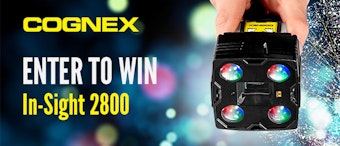Terry Blevins, senior engineer with Emerson Process Management, the Austin, Texas-based automation supplier, says people use电子设备说明语言(EDDL)通常没有意识到这就是他们正在使用的。连接到HART现场设备的维护技术人员可能正在使用EDDL技术来配置,设置和校准设备。但是大多数人都不知道这项技术可以实现这些行动。
That’s one of the beautiful things about EDDL according to Blevins, who is also chair of the International Society of Automation’s ISA 104 committee, which shepherds that standard for the technology. Because it is a text-based language and not written in a programming code such as C or C++, EDDL can be read on a variety of devices. It will work just as well on a handheld terminal for configuring devices in the field as in a Microsoft Windows-based controller looking at the entire process. Older EDDs still work on today’s software, and many EDDs written for Hart Communication Foundation devices actually still work when the device is enabled for WirelessHart. And EDDs can be written for both simple devices and complex instruments.
International standard
IEC 61804-3, an international standard promulgated by the International Electrotechnical Commission, specifies EDDL as a generic language for describing device parameters and their dependencies; device functions, for example, simulation mode and calibration; graphical representations, for example, menus; interactions with control devices; graphical representations; and persistent data store. It is a way to access live information in devices that incorporateHart,基础现场总线或者Profibus.
Engineers, operators and technicians need to interface to the information that can be served up by these Hart, Fieldbus or Profibus devices—and indeed communicate both ways. The device manufacturer writes an Electronic Device Description. These are text files and available from the manufacturer or via download fromwww.fieldbus.org. The EDD is resident in the handheld terminal or control system or other client device. This device contains an application that displays the information. The EDD itself is not dependent upon any operating system.
An important point to note is that if each device manufacturer builds its own interface separately from every other manufacturer, it would be possible that each type of valve, for example, could have its own way of showing a trend. While each manufacturer would pat themselves on the back for doing the best interface, operators and technicians at the user site could well be confused when looking from one to the other. Blevins points out that with EDDs, the host enforces discipline on the display. So the displays of one company’s control system can have a consistent look and feel while giving each device manufacturer the ability to put its unique stamp on the type of data available.
EDDL has evolved over the years to keep up with the latest in human-machine interface and client computers. It was originally designed for handheld terminals that might just have a few lines of digital text. The evolution of powerful computer displays with high-quality graphics functions meant that device manufacturers and operators alike wanted to see better graphics on control system displays. Enhanced EDDL was developed to enable this capability. It also enabled the capability for the manufacturer of the host system to design the actual display, while allowing device manufacturers assurance that their particular features as described in the EDD would be available to operators. More information may be found atwww.eddl.org.
EDDL: Real-time Communication With Field Devices
一些最好的技术是使人们可以做事而不必担心技术本身。
Sep 1st, 2010
































